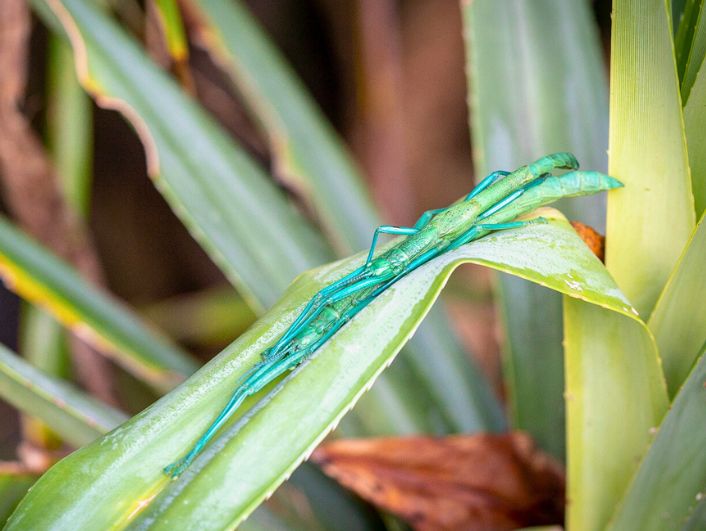Critter Corner – Peppermint Stick Insect
#CritterCorner – Imagine this… you’re a small insect living in a rainforest… what would you choose as your defence mechanism?
How about glands behind your head that can shoot an irritating, peppermint scented spray at predators?
Not what you were thinking? Well, the Peppermint stick insect (Megacrania batesii) has just that!
These fascinating and beautiful insects spend most of their time camouflaged within their food plants – a few species of pandanus, including Screwpine (Pandanus tectorius) – where they can flatten themselves in the natural furrows created by the shape of the leaves.
If you do happen to spot a Peppermint stick insect, we ask that you admire it from a safe distance. When they feel threatened, they will spray a white fluid from their prothoracic glands which may smell minty fresh, but it can be very irritating, particularly if it gets in your eyes. It is also a very strenuous act for the frightened stick insect so please leave them be.
Information sourced from Wet Tropics Management Authority and Minibeast Wildlife.
Want more good Rainforest news in your life?
Subscribe to our eNews | Follow us on Instagram | Like us on Facebook | Subscribe to our YouTube channel
Help Protect Rainforests Forever
Donate to Protect Rainforests Forever | Become a Rainforest Guardian | Partnership Options


